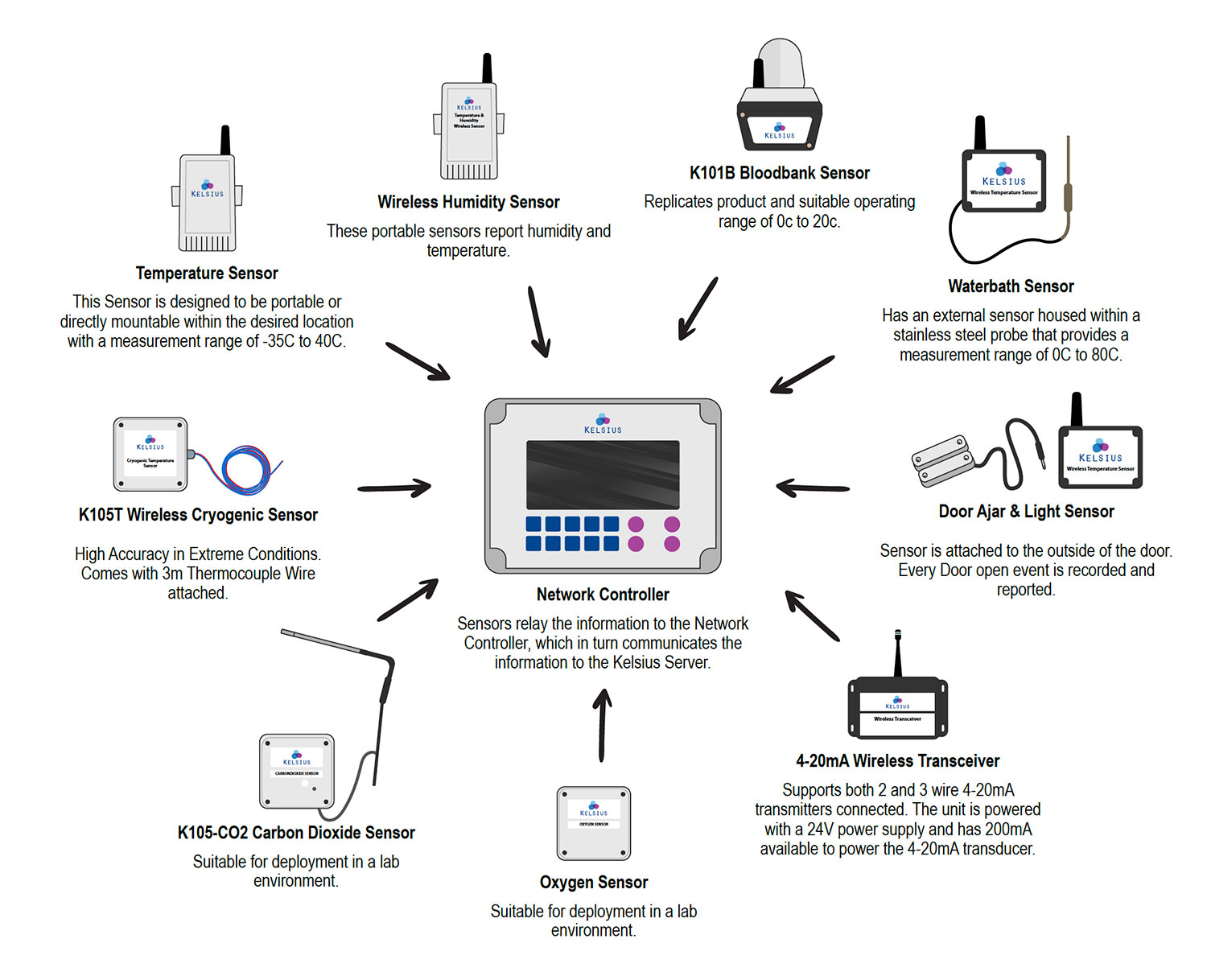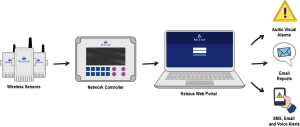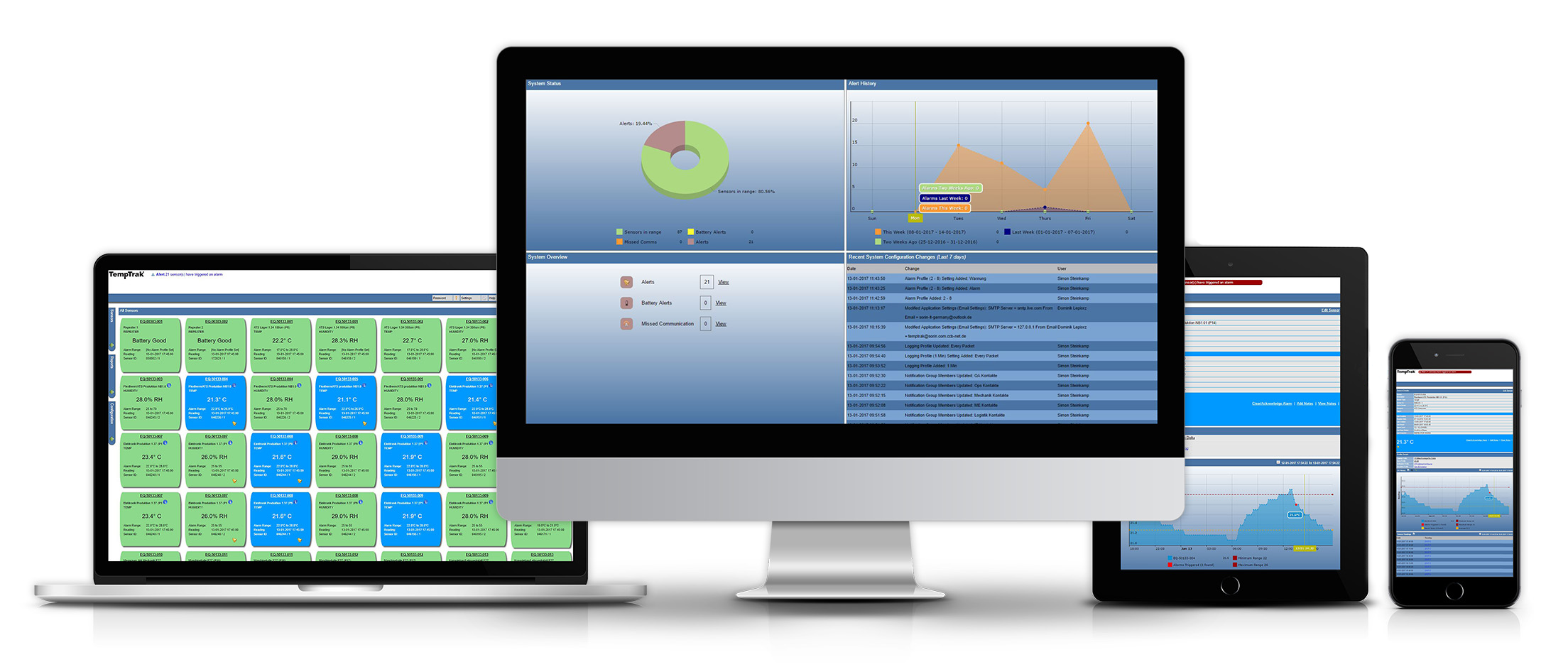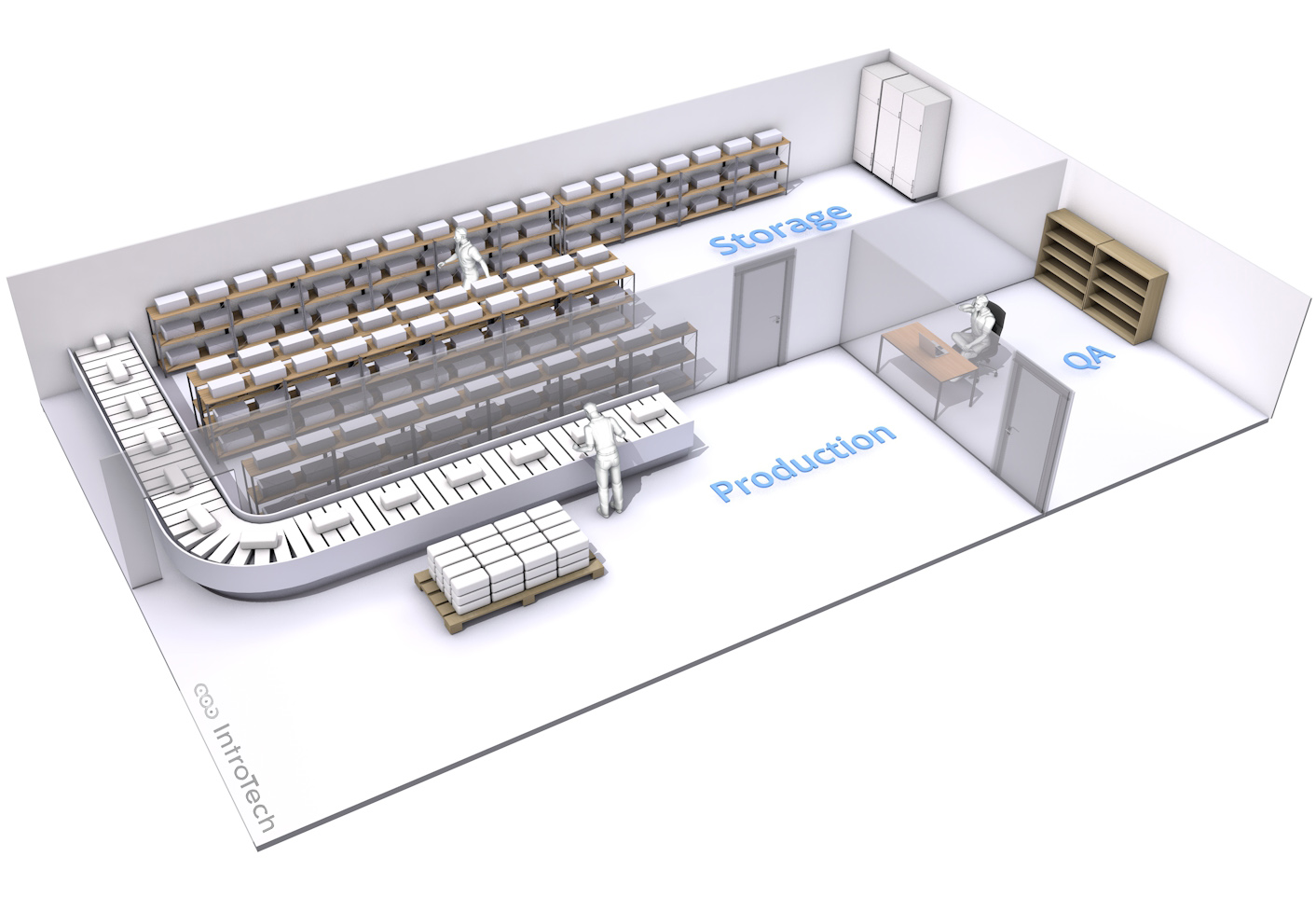Why a central monitoring system?
A Central Monitoring System enables you to proof your regulatory compliance. Once the critical control points are located by temperature mapping, the e-GDP / e-GMP regulations for the pharmaceutical industry prescribe that each critical control point should be monitored 24/7. In addition, the e-GDP / e-GMP regulations demand that the organization needs to be alarmed when a critical point exceeds one of their limits.
How does wireless monitoring work?
Obviously there are a few kinds of wireless monitoring systems. One of the most advanced monitoring systems of the moment is Cooper Atkins’ wireless monitoring solution ‘Kelsius’.
The Kelsius system works as follows. Sensors are placed at the identified critical measurement points. These sensors can collect different kinds of data such as temperature, humidity, numbers of particles (PPM), Co2 and pressure (Pa). Once the recorded data is transferred to the receiving base station, it is saved in the database and send to a cloud-platform via WiFi. The gathered data is accessible via a secure web portal. If one of the critical measurement points exceeds their set limit, an alarm is send to one or multiple employees.
To make sure your monitoring system is compliant with the e-GDP / e-GMP regulations Introtech provides the best hardware, software and services.

Central Monitoring System by Kelsius
The Data collected by Kelsius enables you to proof your regulatory compliance.
- Collecting and sharing environmental data.
- Monitor unlimited locations.
- Single robust software platform.
The Kelsius Central Monitoring System will meet or exceed all regulatory compliance, including Joint Commission, CAP, CDC, FDA, AABB, AATB, ISO 17025, USP 797 & NIST standards to ensure accuracy, reporting and alerting on a real-time, 24/7 basis.
Hardware
Kelsius hardware consists out of transmitting sensors and receiving sensors. The transmitting sensors collects the data and sends it through WiFi to the receiving base. The transmitting sensors have an open-field that reaches up to 762 meters. If more range is needed, Cooper Atkins provides repeating sensor that can reach an open-field range that goes up to 6,44 kilometers.


Software
Once the data is collected, the receiver saves the data on a cloud-platform and on the hard drive as well. The data is accessible through a secure web portal. The Kelsius system has multiple tools available to gain business insights and generate reports. The system can set alarms to alert employees 24/7 if one of the sensors exceeds the set limit; or a possible danger occurs.



